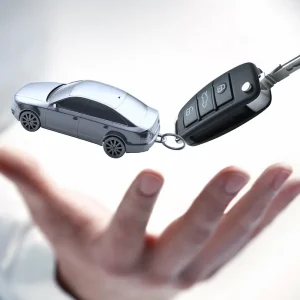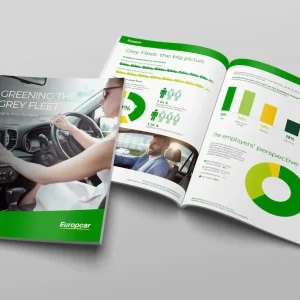Establishing hydrogen in the fleet marketLabel it how you want – environmentally friendly, low CO2, saving the planet – the green agenda is one that simply won’t go away. And with good reason, because it has a massive impact on fleet operators.
Yes, there’s the corporate social responsibility element, which is enough to tick the box for a lot of businesses by itself and steer them towards the use of ultra low-emissions vehicles. But it’s far from a secret that if you cut CO2, your costs will also take a nosedive, so there’s no reason not to.
Low CO2 goes hand-in-hand with better fuel economy – with internal combustion-engined vehicles at least – so cleaning up a conventional fleet can only do your balance sheet a favour, and that’s before you get to plug-in vehicles.
BusinessCar and Hyundai’s round table event discussed exactly that: how fleets can go green and reap the benefits that come with it. Key talking heads and delegates from around the industry gathered at the Royal College of Nursing in the heart of London to tackle the big issues surrounding the environment and fleet. Over the next six pages, BusinessCar ‘s special report reveals the major talking points, thoughts and insights.

What’s the first piece of advice you’d give a fleet looking to improve its environmental performance?
BusinessCar editor Paul Barker kicked off the session by asking attendees where fleets should start and what their first move should be if green issues are on their agenda.
Arval’s Mike Waters offered this advice: “They need to have a look at their existing policy and what they’re trying to achieve, then work out what vehicles fit within their fleet. The start point is cost, not environmental performance. Generally, if you’re reducing costs, you’re improving your environmental performance.
“From an LCV perspective, it’s looking at vans they currently have on their fleet and figuring out whether they’re the best things in terms of size. We do come across fleets with 20 Transits and they’re not using them nearly enough.”
The EST’s Caroline Watson agreed, adding that a lot of fleets have too many vehicles for the job: “We frequently see fleets using multiple vehicles and doing little mileage, so it’s cost-effective to use less and use electric vehicles in these cases.”
Single-badge policies also caused debate, but attendees were virtually unanimous in their agreement that they are not good for going green.
Waters said: “We also see companies using particular types of vehicles in big numbers. They might have a fleet of hybrids, for example, but that’s no good for the drivers doing big mileages up and down motorways – you won’t get the economy from those cars there, so it’s important to dig a bit beneath the surface.”
KeeResources’ Mark Jowsey added: “These single-badge policies are driven by a lack of resistance from users. There’s a need for the fleet manager to encourage users to buy a product that, on paper, has an obviously lower power. People think that driving anything under 140hp is no good, but actually that’s not the case and there is good product out there.”
Rupert Pontin of Glass’s also agreed that a blanket policy isn’t the way forward for practically cutting CO2: “It comes down to a huge element of cost with green policy. Put someone on the road doing 50,000 or 60,000 miles a year and say ‘great, here’s a green policy with a hybrid’ – it actually doesn’t work in those circumstances and you need look at the actual usage of the vehicle.”
Can you go green by accident?
Attendees were asked whether it was possible to make a fleet environmentally friendly without necessarily intending to, focussing on cost rather than cutting CO2.
The EST’s Caroline Watson said: “We win fleet people round by making a financial case. If they can’t save money and reduce emissions then they can’t do it.”
Hyundai’s fleet boss Martin Wilson said drivers at least were now more game for low-CO2 models: “Drivers, I think, are quite prepared now to consider lower-CO2 cars and ones with less power. The stumble into one means the other happens.”

Telematics: a solution to cutting CO2?
Hyundai’s fleet boss Martin Wilson suggested that in addition to driver training, telematics programmes were becoming ever more popular with big businesses in their quest to cut emissions. “A lot of bigger fleets are using telematics and certainly looking at driver training,” he said.
Arval’s Mike Waters added: “Particularly with workhorse fleets, telematics is useful. If it’s more of a perk fleet then it’s a harder discussion. However, we do have a couple of customers who have gone down the safety and security route rather than ‘we need to know where you’re going’.”
Georgina Smith, fleet administrator at Healthcare at Home, voiced her concerns about buying into such a package too early because the rate at which the technology was escalating meant it could quickly become redundant.
“I’m flooded with emails every day with people trying to sell it to me, but it looks better every time. If I buy it now, what am I missing?” she asked.
Smith added that it seemed a worthwhile proposition though, because: “You move away from assumption and a make a decision based on facts.”
Used electric vehicles and the Government’s plans to fund the second-hand market
A discussion on the return fleets will get on electric vehicles addressed the big question mark that continues to hang over their residual values.
Glass’s Rupert Pontin said: “At the moment we do not have any factual evidence about what these [electric] vehicles are worth and the end of their life. When is the end of their life?”
The EST’s Caroline Watson added: “With the analyses we do, we quite often write the RV down to zero, so if they do get a return, then it’s a bonus.”
She also said that there have been incidences where purchasing a second-hand EV has proved viable for certain fleets.
“When the case won’t stack up financially for them because the mileage is too low, we’ve worked with at least one organisation – a university – which bought a second-hand Kangoo [Renault’s Kangoo ZE is an electric light van]. For them, [it] was perfect because they were doing too low mileage and couldn’t afford to get a brand new one.
“I’m relatively confident about [EV] RVs because with such low fuel costs people are going to want good value second-hand electric vehicles.”
Hyundai’s Robin Hayles revealed the Government has been considering the possibility of a funding initiative for used electric cars: “We met last week with OLEV (The Office for Low-Emissions Vehicles) when they were discussing budgets for next year and so on, and there was a definite message that there is a second-hand market for these vehicles. They did mention whether a portion of that funding needs to go into that.”
Air quality taxation: going beyond London
Attendees discussed whether localised congestion charging or taxation based on air quality was likely to establish itself in metropolitan areas outside of London.
KeeResources’ Mark Jowsey said: “I’m surprised we haven’t seen emission-based congestion charging in other large metropolitan areas. Anything that penalised business is considered counterproductive. We haven’t seen the progression I would have expected.”
Healthcare at Home’s Georgina Smith, added: “Boris [Johnson] is talking about London but the rest of the country is being missed out,” while the EST’s Caroline Watson said: “London had strong leadership with Ken [Livingstone] and Boris.
In London, Ken said the money was going to be pumped back into public transport. He got opposition [to the Congestion Charge] but he did it anyway. It’s like the smoking ban again – no one wanted it but then it came in and everyone loved it.”
Jowsey continued: “There are other air quality benefits in general. Setting policies should be a nationwide thing based on Government direction.”

Incentives for used electric vehicles and the leader of the technology pack
BusinessCar editor Paul Barker asked attendees about the kinds of incentives that could be implemented and what might work well for getting second-hand electric vehicles off the ground.
KeeResources’ Mark Jowsey said the biggest problem lay with used car dealers: “The big concern is the perception from dealers. How fast can they sell and move the vehicles on? I think you could find enough interested people.”
Rupert Pontin of Glass’s remained sceptical: “There is minimal demand for a second-hand electric vehicle. A six-year old car with batteries – they’re not covered after eight years. In two years you’re going to have to pay £8000 to replace that.”
Arval’s Mike Waters said the list price was a huge barrier to buyers and that whole-life costs needed to be considered: “From a fleet perspective, we will talk to fleets on a whole-life cost basis. Often they don’t look at that – they just look at the ticket price.”
Hyundai’s Martin Wilson said there was concern about which new technology to back, and whether some would be left behind, leaving fleets with redundant tech. “The other issue is that things are moving on so quick,” he said. “What technology is going to come out on top? We’d like to see a consistent message from Government because we just don’t know whether some technologies are going to be dropped or if others are going to die out.”
ITM’s Charles Purkess contended that it’s not wrong to group new technologies together in this respect: “Don’t lump battery EVs in one pot and hydrogen fuel cells in another. There’s too much polarity in terms of what’s gone on in the past five years. You need to look at new technologies side by side. You need to look at the duty cycles and the operational benefits for fleets.
“We mustn’t get into buying up one specific technology, and keep a broad mind. If policy could do that then it would be a big win.”
Healthcare at Home’s fleet administrator Georgina Smith said leasing was a much more viable option for electric vehicles, as a business could allow the leasing company to worry about the residual value.
“We’re looking at Alphabet’s Alpha City electric pool car scheme. It’s great for us because you can let somebody else take the residual value risk,” she explained.

Establishing hydrogen in the fleet market
Charles Purkess of ITM Power explained that, although they seem a long way off, fleets can expect an increase in the number of practical hydrogen vehicles available from 2015.
“It used to be the case that they were very much demonstration cars, like Honda’s FCX Clarity, and you’d be told the price tag was £1m.
“When we met Hyundai to try the iX35 they said ‘here are the keys, see you in a couple of weeks’. That really demonstrates where things have got to. There are plans to have 65 stations in place by 2015 and 1000 stations by 2020.
“Car companies are collaborating and there will be a broader offering, between 2015 and 2018, of those vehicles on the roads.”
Arval’s Mike Waters added: “The Government can learn from what happened with LPG – and that’s not to decide for the market which way the market will go. As soon as the Government removed the support for LPG, everything dropped out of it.”
Waters also raised the issue of the lack of an infrastructure for hydrogen fuel in the UK, and asked who would pay to cover the cost of setting one up.
Hyundai’s Robin Hayles responded: “There are a number of different attitudes. It’s a combination of gas companies and infrastructure providers, then you have the vehicle manufacturers – we invest in the technology.
“There are a lot of unknowns at the moment, but at least these issues have been identified and there’s a lot of people working towards ‘what do we need to do? Who’s buying, who’s investing?’ There is a Government understanding that a level of intervention is needed that is perhaps a lot higher than has gone on so far.”
He added that there are moves to better educate younger audiences about hydrogen so it stands more of chance further down the line.
“Within an organisation called Hydrogen London there is the London Hydrogen Schools Challenge. What they do is go into local schools in London, explain the technology and the benefits of it, and they use a competition-based way of doing it.
“So the thinking is that maybe not the next generation but the generation of car buyers after that accept this and will be the users of these cars. It’s educating at that level now.
“There’s already this buy-in and acceptance of the technology at that age, so in the eight or nine years’ time it will take for these people to purchase a car, I would hope the infrastructure will be in place, so it will make it a logical purchase.”
Georgina Smith, fleet administrator at Healthcare at Home, agreed that acceptance of new technologies was a generational issue, and something that was likely to improve as younger fleet operators step up to the plate.
“Maybe we should think that in 10 years’ time, decision makers are going to have a completely different opinion. I did some ICFM training recently and noticed that there’s a lot of new blood in the field now. There are a lot of really young people and they might be more willing to look at new technologies,” she said.
Petrol vs diesel: the great fleet debate
The shift from diesel-dominant fleets back towards petrol has been a hot topic for some time. Some parties maintain that the current pattern won’t change, while others suggest that the lower cost of unleaded fuel and a cheaper P11D price now make the new breed of efficient petrol engines more viable.
KeeResources’ Mark Jowsey commented: “I had a car with a small, efficient petrol engine recently and I achieved an mpg average that I thought made this engine viable over three years and 60,000 miles. This product, in my mind, seemed a more viable product than it would have been five years ago. I think we will see less dominance of diesel in the company car market.”
Rupert Pontin of Glass’s added: “I was asked this question five, 10 and 15 years ago and we still haven’t seen any great volume [of petrols]. Are we going to see that is a very good question.
“What we are seeing is an increase in salary sacrifice and that puts a very different spin on it. It’s taking people out of what companies say, which is ‘you do this job, you drive an Astra diesel’. Salary sacrifice allows them to say ‘you know what, I fancy a small petrol’.”
But Arval’s Mike Waters cautioned: “The issue there is that reallocating a car can be an issue if the employee leaves and you’ve got a driver doing a higher mileage.”
Pontin continued to say that the increasing number of small, efficient petrol engines haven’t made the impact that they were slated to: “There has been this influx of petrols that are supposed to be more efficient and reliable, but they’re not. That doesn’t help it and it doesn’t make people want to shift towards it – it might look good on paper, but the reality is that it’s not.”

The discussion turned to the subject of manufacturers’ fuel economy claims and how difficult it is to meet them. Pontin continued: “My car is supposed to do 57.5mpg on paper. I cannot get it to do more than 42mpg even when I’m trying.”
Jowsey added: “Some of the official figures, which are correctly achieved in a test environment, cannot be met.”
BusinessCar editor Paul Barker asked if it was better to have “a test that we all know is flawed than no test at all”, to which Waters responded: “It’s better to have a test than to have no test at all, but there is no better way of looking at a fleet proposition than whole-life costs.”
The EST’s Caroline Watson suggested that manufacturers differed in their approach to the official fuel economy test depending on what they wanted to achieve. “It isn’t a level playing field and some are optimising it for the test, while others are doing it so it’s more realistic and the customer is satisfied,” she said.
Driver training: the easy way to green a fleet
Attendees discussed hints and tips for making a fleet more environmentally friendly and universally agreed that driver training was the best and the easiest option.
Arval’s Mike Waters said: “With an existing fleet, it has to be driver training. It is a prerequisite for all fleets.”
Glass’s Rupert Pontin added: “You’re right – and driver aids. It all helps people identify how badly they’re driving.”
KeeResources’ Mark Jowsey said: “Driver training is the best opportunity if you’ve got an existing fleet that perhaps isn’t as driver-focussed.”
ITM’s Charles Purkess said his organisation conducted a trial of two hydrogen vans that revealed an enormous difference in real-world fuel economy between drivers, regardless of the fuel.
“We converted two Ford Transit vans to hydrogen and we trialled with [support services company] Carillion, councils, DHL and others. Regardless of the fact that they had clean fuels, what different personalities could achieve out of a tank from the vehicle was quite startling actually. It showed that one of the biggest opportunities we’ve got is driver training.”
Georgina Smith, fleet administrator at Healthcare at Home, said she introduced driver training for her fleet and had gone through it herself: “We have one-to-one training with ROSPA. Anybody that’s in the company gets to do it. It’s amazing. It made me a very confident driver and I wasn’t before.
“It taught me to read the road. We do it at two-year intervals, which is just about right. They just drive along with you and discuss it with you afterwards.”






